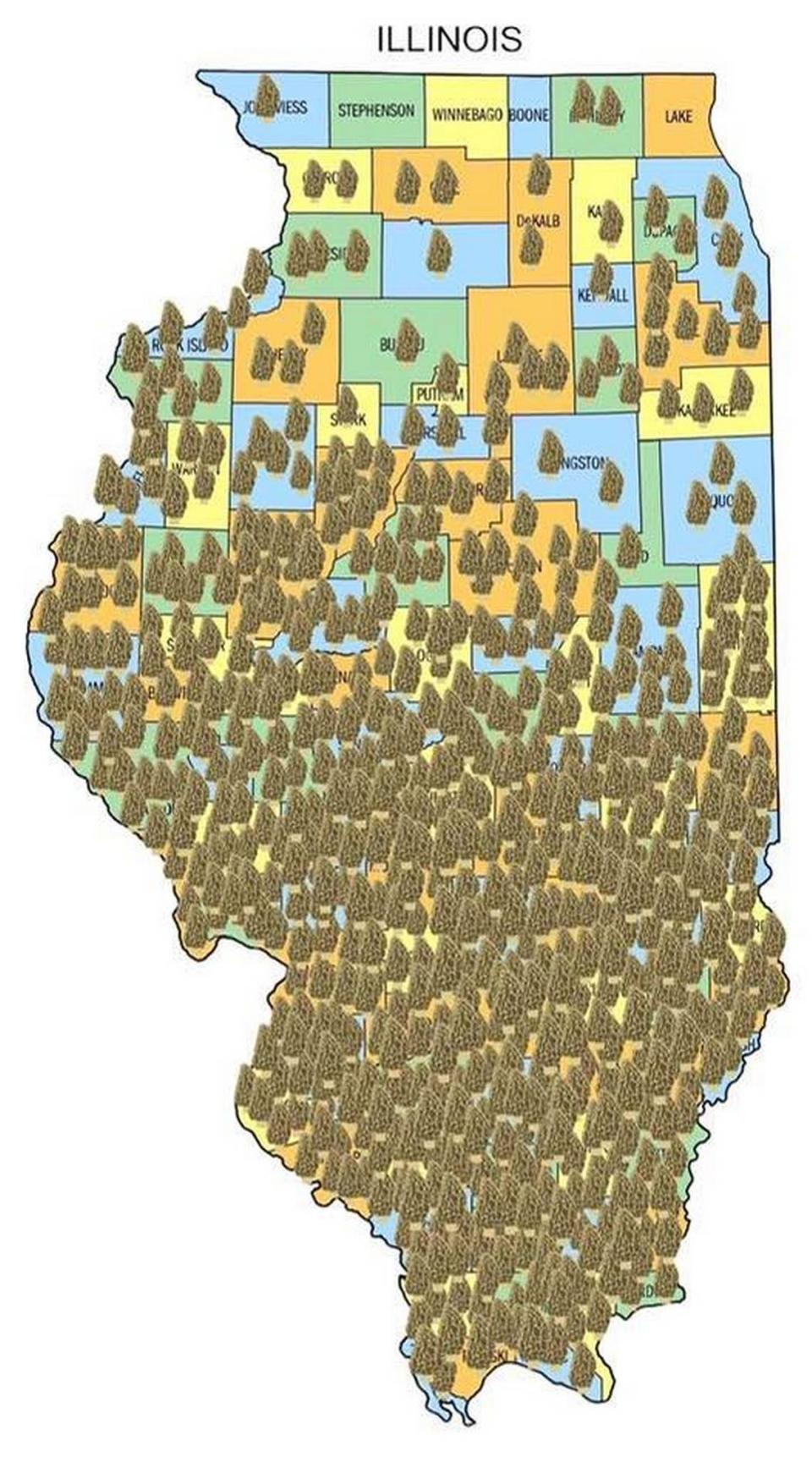Foraging season peaks early in metro-east for this edible delicacy. A guide to find them
Morel season is peaking in the metro-east, and you’ll want to get out and forage soon before the “delicacy” mushrooms leave for the year.
The popular mushrooms are more widespread right now than they were this time last year, but the progression is weather-dependent and the peak could end quickly in southwestern Illinois.
Chris Martin, from Fulton County, founded the Illinois Morel Mushrooms Facebook page about nine years ago. What started as a simple communication tool has now amassed 82,000 followers who are interested in foraging for the mushrooms.
Martin has been hunting morels for 32 years, and he said the main reason he decided to start the group was because of the unpredictable nature of the mushrooms. One year he might find 10 pounds of morels, and another year he would go out on the same day and find one single morel.
“Morels are very tricky,” Martin said.
Two noisy insect broods will emerge simultaneously in Illinois for first time in 200 years
Illinois Morel Mushrooms accepts reports from the public on morel finds, and foragers are required to submit a photo including the morels they found along with a receipt from a nearby store or a piece of paper with the date and location written down for proof of their find.
Martin compiles the submissions and makes sure they seem legitimate before adding a picture of a morel to a statewide map in the county where they were found.
Morels have been reported across the metro-east, southern Illinois and most of the state as of Thursday, though northern Illinois hasn’t seen as many finds yet. Martin compared morel reports from earlier this month to April 2023 and found significantly more have been reported so far this year.

“It’s definitely ahead of schedule,” Martin said.
Here’s what to know about morel foraging in the metro-east this year.
Hunting for morels near Belleville
Morel season can last anywhere from five days to two weeks, with outliers, but generally ends when an area sees several days in a row with temperatures above 85 or 90 degrees Fahrenheit, Martin said.
Belleville has seen some warmer days lately, but doesn’t have any 90-degree days in the near forecast, so it’s a good time to get out and look for morels.
Martin suggested people search at field edges during the beginning and middle of morel season and said foragers should look deeper into the woods later on in the season. Locals could also get lucky and find patches of morels growing in their own backyards.
“It’s also fun, it’s almost like an adult Easter egg hunt,” Martin said.
Along with the enjoyment of searching for them, another reason morels are so popular is because of their versatility in cooking.
“It’s a delicacy, the taste of them is amazing. And you can do so many different things with them,” Martin said.
It is important to cook morels as they are unsafe to eat raw. The U.S. Centers of Disease Control and Prevention reported a gastrointestinal illness outbreak in Montana in 2023 related to morel consumption at a restaurant, and the agency found “consumption of raw morel mushrooms was more strongly associated with illness than was consumption of those that were at least partially cooked.”
Another safety tip to keep in mind is to be absolutely sure of the type of mushroom you found before consuming it. Some mushroom species look similar to morels but are dangerous to eat, even cooked.
“If you’re not sure if it’s a morel or not, definitely don’t eat it,” Martin said.
Illinois has three morel species, according to the University of Illinois Urbana-Champaign extension, including the yellow morel, black morel and half-free morel. Another part of responsible foraging is to confirm whether the natural area you’re in allows collection of mushrooms, the UIUC article continues.
True morels have hole-like pits and are hollow inside, according to the Michigan Department of Natural Resources.
If you find a mushroom in the spring you think could be a morel, Martin recommended bringing it home and doing some research online to confirm the identification before grabbing your frying pan.
Do you have a question about nature in Illinois for our service journalism team? We’d like to hear from you. Fill out our Metro-east Matters form below.

